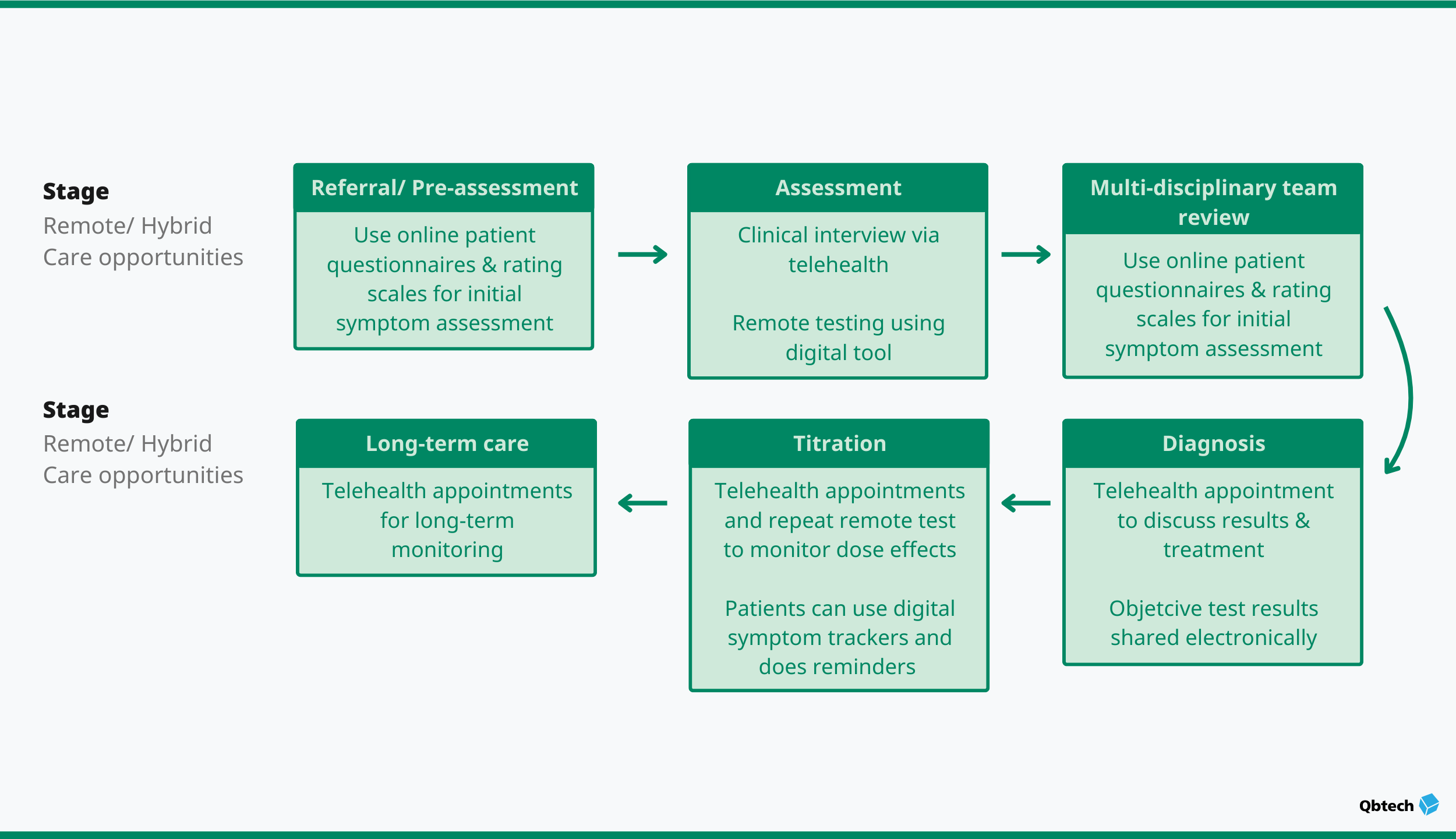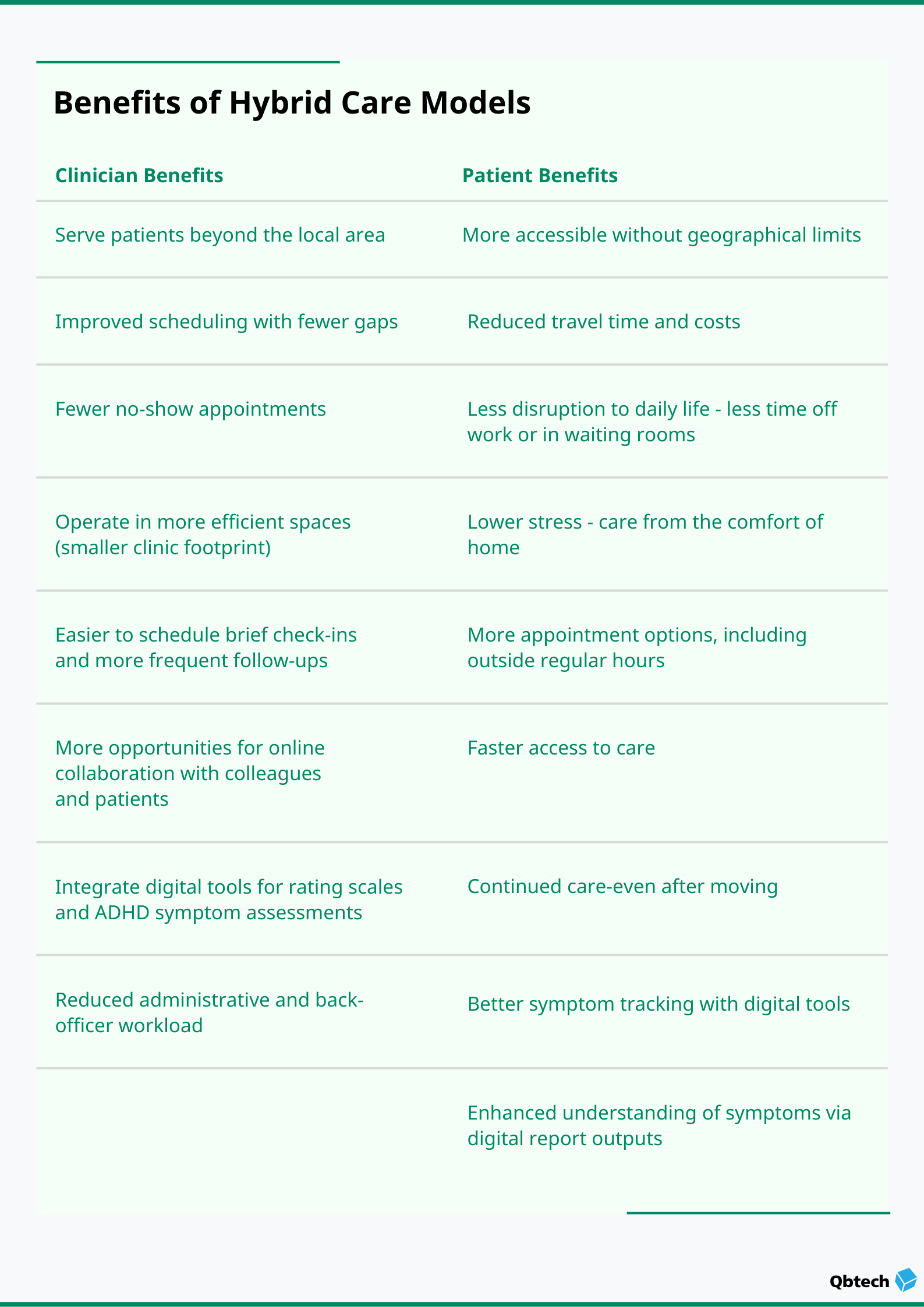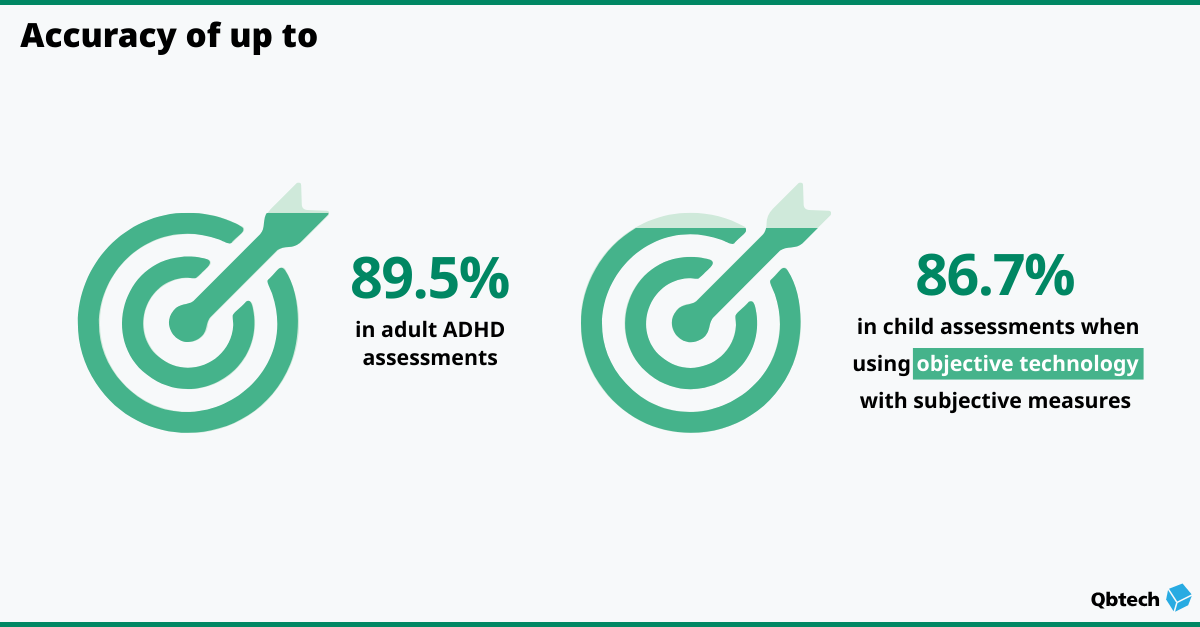Clinician expertise, experience, decision-making, and interactions with patients remain at the heart of the hybrid ADHD clinic model. Its function isn’t to reduce the role of the clinician in the ADHD journey; instead, it is to enhance it. Using digital tools helps remove inefficiencies from pathways and tackles waitlists by streamlining the overall process.
A hybrid ADHD clinic offers a blended care model that combines in-clinic services with online and telehealth services, supported digital technology such as remote ADHD tools.
What does a hybrid ADHD pathway look like?
Here’s an illustrative example of a hybrid clinic offering consultations and assessment via telehealth and using digital tools like online symptom trackers and remote ADHD tests.

Why hybrid and remote ADHD services are necessary in 2025
Demand for ADHD testing in 2025 is high. And traditional ADHD pathways are struggling to meet it.
In the US, the Department of Health and Human Services has identified long wait times and limited access to specialists as major barriers to ADHD diagnosis in adults. In the UK, NHS England recently reported that as of March 2025, up to 549,000 people in England may be waiting for an ADHD assessment, with up to 20,000 new referrals in the month.
Modern clinics of today have responded to this challenge by incorporating digital tools and offering hybrid clinic services to relieve pressure on waitlists and support more patients.
ADHD titration checklists for hybrid clinics
These checklists are provided to summarize the process of titrating remotely or in a virtual or hybrid clinic. They are non-exhaustive and included as a guide only. Clinicians should make their own judgments about ADHD medication titration. Qbtech is not liable for any consequences.
How hybrid ADHD care models solve common ADHD pathway problems
Hybrid ADHD care models effectively tackle many of the long-standing problems faced by both clinicians and patients alike. Patient surveys show strong support for hybrid and virtual models of care, and a high degree of willingness to continue using them.
Parents and caregivers on the use of telehealth in ADHD care -
- 70% found telehealth easy to use
- 62% were comfortable communicating with healthcare professionals via telehealth
- 59% were satisfied with telehealth
- 81% were willing to use telehealth for future ADHD appointments
Source: Galvin et al.
There are also clear efficiency benefits for clinicians. One clinic using telehealth has seen missed visits and late cancellations decrease by 72% for telehealth appointments compared to in-person consultations.

Many of these benefits directly contribute to shorter wait times by making both the clinical and admin sides of care more efficient. Faster screening, clearer triage, and easier scheduling mean fewer backlogs and delays and shorter waits for patients. Opportunities for appointments via Telehealth add flexibility, helping clinicians to see more patients, without needing more buildings or staff on-site every day.
The result is that hybrid clinics can take on additional patients, over a wider area, and do it without compromising on quality, safety, or experience. They use digital technologies and tools to create a more modern, efficient, and effective pathway that benefits both you and your patients. In doing so, hybrid models solve some of the biggest, most persistent challenges in ADHD care.
With long waitlists and rising demand, this approach is a practical, scalable means to deliver better care now and in the future.
The role of digital ADHD tests in hybrid care pathways
A critical element of the hybrid clinic model is the ability to confidently diagnose ADHD remotely. Digital ADHD tests like QbCheck enable clinicians to collect valuable data on patients’ symptoms via an electronic test administered in the patient’s home.
This objective data supplements the data from rating scales, the clinician interview, and any in-clinic observations or measurements (which may already have been collected by the referring physician).

Source: Assessing ADHD symptoms in children and adults: evaluating the role of objective measures; Behav Brain Funct. 2018 May 18;14
The inclusion of a digital test in the assessment process can help to reduce the time from assessment to final decision and support titration adjustments.
When a digital ADHD test was incorporated into the care pathway:
- Clinicians are more likely to reach a diagnostic decision about ADHD
- Appointment length is reduced by 15%
- Clinician confidence in diagnostic decisions is increased.
Source: Hollis et al.
Hybrid ADHD clinics – the future of ADHD care?
Approximately 50% of US adults with ADHD have already used telehealth for ADHD services at some point in their lives. Patients are becoming more familiar with the idea of receiving health services digitally, and as digital tools continue to improve, any existing patient concerns are likely to diminish further.
Hybrid clinics effectively address many existing problems in care pathways and offer distinct benefits to both patients and clinicians. More than that, in a landscape of high demand and long waitlists, hybrid clinics are essential to helping clinicians deliver the gold standard of ADHD care in 2025 and beyond.
Looking for ways to grow as a successful hybrid clinic?
Download our medication management checklist that was designed keeping clinicians in mind
